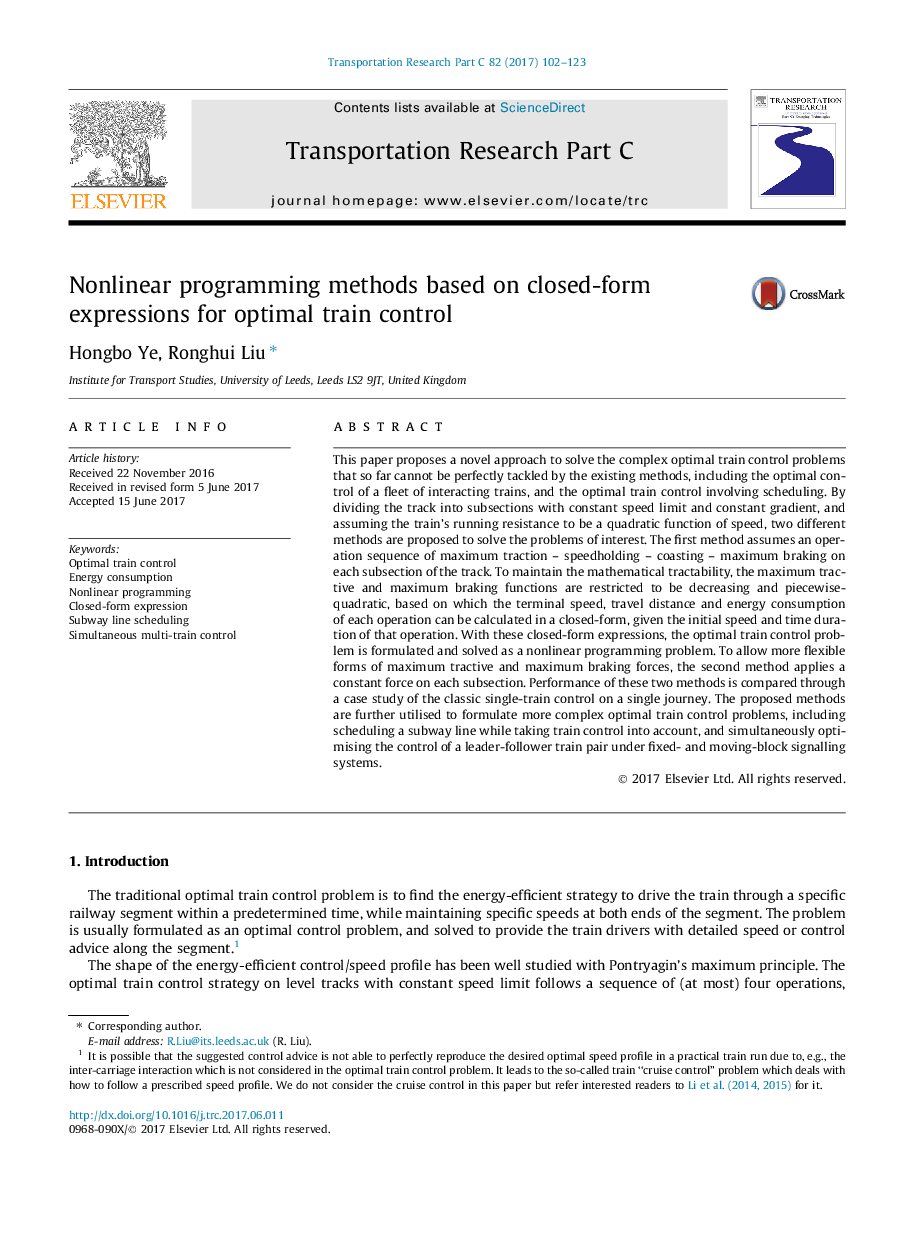| Article ID | Journal | Published Year | Pages | File Type |
|---|---|---|---|---|
| 4968484 | Transportation Research Part C: Emerging Technologies | 2017 | 22 Pages |
Abstract
This paper proposes a novel approach to solve the complex optimal train control problems that so far cannot be perfectly tackled by the existing methods, including the optimal control of a fleet of interacting trains, and the optimal train control involving scheduling. By dividing the track into subsections with constant speed limit and constant gradient, and assuming the train's running resistance to be a quadratic function of speed, two different methods are proposed to solve the problems of interest. The first method assumes an operation sequence of maximum traction - speedholding - coasting - maximum braking on each subsection of the track. To maintain the mathematical tractability, the maximum tractive and maximum braking functions are restricted to be decreasing and piecewise-quadratic, based on which the terminal speed, travel distance and energy consumption of each operation can be calculated in a closed-form, given the initial speed and time duration of that operation. With these closed-form expressions, the optimal train control problem is formulated and solved as a nonlinear programming problem. To allow more flexible forms of maximum tractive and maximum braking forces, the second method applies a constant force on each subsection. Performance of these two methods is compared through a case study of the classic single-train control on a single journey. The proposed methods are further utilised to formulate more complex optimal train control problems, including scheduling a subway line while taking train control into account, and simultaneously optimising the control of a leader-follower train pair under fixed- and moving-block signalling systems.
Related Topics
Physical Sciences and Engineering
Computer Science
Computer Science Applications
Authors
Hongbo Ye, Ronghui Liu,
